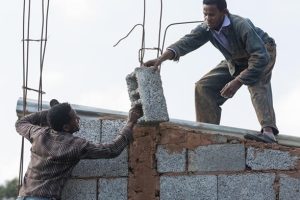
It is clear that cities with advanced facilities, rich history, and vibrant culture will be the epicenter of tourist influx. Owing to this, cities around the world are working to attract visitors and spur economic growth by providing tourist and resident-friendly services.
According to the 2023 World Cities Report, released by the United Nations in June, many cities are focusing on promoting their unique cultural, historical, and natural attractions to draw in visitors. This includes investments in tourism infrastructure, enhancing public spaces, promoting unique cultural activities, local cuisine and artisanal goods among others.
The report identified several cities that have seen particularly strong tourism rebounds in 2022 and early 2023. Top among them was Dubai, the United Arab Emirates, which welcomed over 14 million international visitors in 2022, surpassing its pre-pandemic tourism levels. Another standout was Madrid, Spain, which saw a 78 percent increase in international arrivals in 2022 compared to 2021.
Following these global experiences, Addis Ababa is also flexing its muscle to become a more livable and tourist-friendly city. The Addis Ababa Corridor Development Project, which is designed to transform the capital and improve quality of life by developing an integrated transportation and urban system, thereby driving economic growth is witnessing promising progress.
The project, introduced by Prime Minister Abiy Ahmed, has already led to the successful renovation of places, completion of roads, pedestrian walkways and bicycle lanes. This initiative encompasses massive greenery and beautification projects like the expansion of eco-friendly parks as well as public lavatories.
The ongoing corridor development projects in Addis Ababa, such as the regeneration works spanning the Piassa-Arat Kilo, Mexico-Sar Bet, and Arat Kilo – Kebena – Kenya Embassy corridors, have successfully positioned Addis Ababa as a recognized tourist destination.
Lately, Addis Ababa City Mayor Adanech Abiebie has briefed mayors drawn from various cities of Ethiopia and paid a tour to the ongoing renovation activities in Addis Ababa, Eri Bekentu – Piassa – Arat Kilo under the corridor development program. The Mayor said that the corridor development program is a key achievement, including the installation of underground electric and Ethio Telecom cables and the revitalization of sewerage systems.
She also mentioned that a centralized traffic control system will be implemented in the city. Mayors from various cities in Ethiopia are currently visiting the ongoing corridor development projects.
The corridor development program has not only improved urban services but also contributed to a cleaner city, she opined. She also remarked that once the construction activity is successfully completed, Addis Ababa will have a bigger part in realizing the goal of becoming a popular tourist destination that lives up to its name – a beautiful, blossoming city that is convenient for its citizens and a growing international center of gravity.
In an exclusive interview, Yerer National Hotel and Tourism Service Company Founder and General Manager Abeje Tesfa said that the corridor development project has several benefits for the city. It elevates the city’s beauty, improves the overall image and reputation of locations that have historical values like Adwa Museum, helps the city become a hub of tourist destinations and generates considerable income.
Addis Ababa has a rich history and wonderful landmarks that international tourists and residents should visit. To materialize this, maintaining cleanliness standards and improving urban infrastructure is crucial. Addis Ababa is trying to meet that. When a city looks clean, well-maintained, and visually appealing, it conveys a sense of pride, prosperity, and care to potential visitors. This positive impression can be a major factor in travelers’ decisions about where to spend their time and money.
Beautification projects increase a city’s walkability and “curb appeal.” Things like green spaces, public art, attractive signage and lighting, and thoughtful architectural design make a place more aesthetically pleasing to stroll through. In turn, this could encourage tourists to explore on foot, stopping to browse shops, dine at restaurants, and take in the sights – behaviors that drive consumer spending and economic activity.
“I have been working in the industry for about seventeen years, and this time is the most ideal time for the industry. The government is the sole driver of the industry; and, we, the actors should share the role in propelling forward the sector in developing destinations.”
Nowadays, Addis Ababa is offering a wider variety of interesting attractions and alluring activities for tourists. Parks, plazas, museums, and other cultural institutions that are well-designed and maintained are becoming cherished landmarks and must-see destinations. This expanded pool of offerings gives visitors more reasons to stay longer and return in the future.
He further noted that in the tourism business, winning tourists’ expectations is a fundamental goal. Once a tourist is satisfied with the services in a destination, he/she is likely to build a strong loyalty towards the destination and likely to revisit it and even recommend it to others.
According to him, the economic impact of urban beautification on the tourism industry should not be underestimated. Studies have shown that cities invested in beautification projects tend to see increases in hotel occupancy rates, visitor numbers, and tourism-related tax revenues. This influx of tourist spending can then be reinvested to further improve the city’s infrastructure and amenities, creating an upward cycle of growth and development.
Abeje also urged leaders to sustain efforts in executing successful leveraging beautification projects and developing tourism destinations to boost tourism through a strategic, multifaceted approach. Because many places in Addis Ababa need renovating and beautifying works through face-lifting projects, it is high time to engage in substantially. City leaders must carefully identify the right mix of improvements, target high-potential markets, and coordinate efforts across various stakeholders, because the efforts can pay off in attracting investment and tourists.
“Addis Ababa Corridor Development endeavor is productive because it is human centered as well as that takes into consideration the values of history and culture, I am optimistic that the World Cities Report rapporteurs will incorporate Addis Ababa performance in the coming year booklet”, he opined.
BY MENGISTEAB TESHOME
THE ETHIOPIAN HERALD SATURDAY 13 JULY 2024





